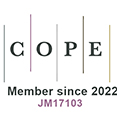REFERENCES
1. McMahan HB, Moore E, Ramage D, Arcas BA. Federated learning of deep networks using model averaging. ArXiv, vol. abs/1602.05629, 2016.
2. Konecný J, McMahan HB, Ramage D. Federated optimization: Distributed optimization beyond the datacenter. ArXiv, vol. abs/1511.03575, 2015.
3. McMahan HB, Moore E, Ramage D, Hampson S, Arcas BA. Communication-efficient learning of deep networks from decentralized data. Proceedings of the 20th International Conference on Artificial Intelligence and Statistics, AISTATS 2017, vol. 54, 2017.
4. Yang Q, Liu Y, Chen T, Tong Y. Federated machine learning: concept and Applications. arXiv, vol. 10, no. 2, pp. 1–19, 2019.
5. Lim HK, Kim JB, Heo JS, Han YH. Federated reinforcement learning for training control policies on multiple iot devices. Sensors (Basel) 2020;20: 1359. Available: https://doi.org/10.3390/s20051359.
6. Ye Y, Zhang X, Sun J. Automated vehicle's behavior decision making using deep reinforcement learning and high-fidelity simulation environment. Transportation Research Part C: Emerging Technologies 2019;107: 155-70. Available: https://doi.org/10.1016/j.trc.2019.08.011.
7. Zhu M, Wang X, Wang Y. Human-like autonomous car-following model with deep reinforcement learning. Transportation Research Part C: Emerging Technologies 2018;97: 348-68. Available: https://doi.org/10.1016/j.trc.2018.10.024.
8. Song X, Chen L, Wang K, He D. Robust time-delay feedback control of vehicular cacc systems with uncertain dynamics. Sensors (Basel) 2020;20: 1775. Available: https://doi.org/10.3390/s20061775.
9. Chu T, Kalabic U. Model-based deep reinforcement learning for CACC in mixed-autonomy vehicle platoon. Proceedings of the IEEE Conference on Decision and Control. vol. 2019-December, pp. 4079-84. [Online]. Available: https://doi.org/10.1109/CDC40024.2019.9030110.
10. Nadiger C, Kumar A, Abdelhak S. Federated reinforcement learning for fast personalization. 2019 IEEE Second International Conference on Artificial Intelligence and Knowledge Engineering (AIKE), 2019, pp. 123-127. Available: https://doi.org/10.1109/AIKE.2019.00031.
11. Qi J, Zhou Q, Lei L, Zheng K. Federated reinforcement learning: Techniques, applications, and open challenges. Intell Robot 2021;1:18-57.
12. Sutton RS, Barto AG. Reinforcement learning: An introduction. MIT press, 2018.
13. Yang Q, Liu Y, Cheng Y, Kang Y, Chen T, Yu H. Federated learning. Synthesis Lectures on Artificial Intelligence and Machine Learning 2019;13: 1-207. Available: https://doi.org/10.2200/S00960ED2V01Y201910AIM043.
14. Liu B, Wang L, Liu M. Lifelong federated reinforcement learning: a learning architecture for navigation in cloud robotic systems. arXiv, vol. 4, no. 4, pp. 4555–4562, 2019.
15. Liang X, Liu Y, Chen T, Liu M, Yang Q. Federated transfer reinforcement learning for autonomous driving. arXiv, 2019.
16. Zhang X, Peng M, Yan S, Sun Y. Deep-reinforcement-learning-based mode selection and resource allocation for cellular v2x communications. IEEE Internet of Things Journal, vol. 7, no. 7, pp. 6380–6391, 2020.
17. Lim H, Kim J, Ullah I, Heo J, Han Y. Federated reinforcement learning acceleration method for precise control of multiple devices. IEEE Access, vol. 9, pp. 76 296–76 306, 2021.
18. Wang X, Li R, Wang R, Li X, Taleb T, Leung VCM. Attention-weighted federated deep reinforcement learning for device-to-device assisted heterogeneous collaborative edge caching. IEEE Journal on Selected Areas in Communications, vol. 39, no. 1, pp. 154–169, 2021.
19. Huang H, Zeng C, Zhao Y, Min G, Zhu Y, Miao W, Hu J. Scalable orchestration of service function chains in nfv-enabled networks: A federated reinforcement learning approach. IEEE Journal on Selected Areas in Communications, vol. 39, no. 8, pp. 2558–2571, 2021.
20. Makantasis K, Kontorinaki M, Nikolos I. Deep reinforcement-learning-based driving policy for autonomous road vehicles. IET Intelligent Transport Systems 2020;14: 13-24. [Online]. Available: https://doi.org/10.1049/iet-its.2019.0249.
21. Sallab AE, Abdou M, Perot E, Yogamani S. Deep reinforcement learning framework for autonomous driving. IS and T International Symposium on Electronic Imaging Science and Technology 2017;29: 70-6. [Online]. Available: https://doi.org/10.2352/ISSN.2470-1173.2017.19.AVM-023.
22. Lin Y, McPhee J, Azad NL. Longitudinal dynamic versus kinematic models for car-following control using deep reinforcement learning. 2019 IEEE Intelligent Transportation Systems Conference (ITSC), 2019. pp. 1504–1510.
23. Peake A, McCalmon J, Raiford B, Liu T, Alqahtani S. Multi-agent reinforcement learning for cooperative adaptive cruise control. 2020 IEEE 32nd International Conference on Tools with Artificial Intelligence (ICTAI), 2020, pp. 15-22[Online]. Available: https://doi.org/10.1109/ICTAI50040.2020.00013.
24. Lillicrap TP, Hunt JJ, Pritzel A, et al. Continuous control with deep reinforcement learning. 4th International Conference on Learning Representations, ICLR 2016 - Conference Track Proceedings, 2016.
25. Lin Y, Mcphee J, Azad NL. Comparison of deep reinforcement learning and model predictive control for adaptive cruise control. IEEE Trans Intell Veh 2021;6: 221-31. Available: http://dx.doi.org/10.1109/TIV.2020.3012947.
26. Yan R, Jiang R, Jia B, Yang D, Huang J. Hybrid car-following strategy based on deep deterministic policy gradient and cooperative adaptive cruise control, 2021.
27. Zhu M, Wang Y, Hu J, Wang X, Ke R. Safe, efficient, and comfortable velocity control based on reinforcement learning for autonomous driving. CoRR, vol. abs/1902.00089, 2019. [Online]. Available: http://arxiv.org/abs/1902.00089.
28. Lei L, Liu T, Zheng K, Hanzo L. Deep reinforcement learning aided platoon control relying on V2X information. IEEE Transactions on Vehicular Technolog 2022. Available: http://dx.doi.org/10.1109/TVT.2022.3161585.
29. Lei L, Tan Y, Zheng K, Liu S, Zhang K, Shen X. Deep reinforcement learning for autonomous internet of things: Model, applications and challenges. IEEE Communications Surveys Tutorials 2020;22:1722-60.









